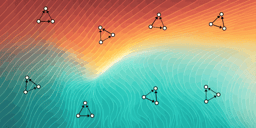The NEREA Augmented Observatory: an integrative approach to marine coastal ecology
Published in Earth & Environment, Ecology & Evolution, and Microbiology
Behind the Paper: Building the NEREA Augmented Observatory in the Gulf of Naples
The NEREA (Naples Ecological REsearch for Augmented observatories) initiative represents a key advancement in our understanding of marine ecosystems in the Mediterranean Sea. This project builds on the methodologies developed through the Tara Oceans project but operates on a monthly observational scale. While Tara Oceans provided a significant snapshot of global marine environments, NEREA offers an evolving view of the Gulf of Naples, integrating both real-time and historical data to enhance our knowledge of this region.
Facing Challenges: Adapting to the Unexpected
Like any pioneering project, NEREA has encountered several challenges. The COVID-19 pandemic, in particular, posed significant obstacles, affecting our ability to continue sampling. We had to adapt quickly, developing new strategies to maintain data quality while ensuring the safety of our team. Constant innovation has been essential, whether through refining sampling protocols or enhancing bioinformatic pipelines. These challenges have driven us to think creatively and continuously improve our methodologies.
Collaborative Efforts: A Network of Expertise
A major strength of the NEREA project has been the collaboration with a diverse group of scientists. Our interdisciplinary approach, involving experts from the Stazione Zoologica Anton Dohrn and other institutions, has been vital to our success. Our work with the Sunagawa group at ETH Zurich has particularly expanded the scope of what we can achieve with our data.
An important aspect of our approach is our connection with the Long-Term Ecological Research (LTER) network, notably the MareChiara LTER site (LTER-MC). Established in 1984 in the Gulf of Naples, MareChiara is one of the longest-running ecological time series focused on plankton and the physico-chemical state of the water column. This site has provided crucial historical context that complements the real-time observations from NEREA, enhancing our ability to identify significant ecological trends and events.
Key Discoveries: Revealing a Rich Dataset
Our paper primarily focuses on presenting the datasets collected through NEREA. The richness of the data itself is a notable discovery. We have compiled a comprehensive dataset that includes physico-chemical parameters, plankton biodiversity data via microscopy and flow cytometry, prokaryotic and eukaryotic metabarcoding, a prokaryotic gene catalogue, and 3,818 prokaryotic metagenome-assembled genomes (MAGs). This extensive dataset provides many opportunities for new insights into marine ecosystems. By making these data available, we aim to enable other researchers to explore and uncover findings beyond our initial scope.
Impact and Future Directions: The Future of Marine Research
NEREA’s impact extends beyond the Gulf of Naples. By offering a detailed, continuous record of marine ecosystem dynamics, NEREA contributes valuable insights into the effects of climate change on the Mediterranean Sea. The initiative has also inspired the development of a network of Italian observatories, which will be important for understanding ocean health on a broader scale.
Looking ahead, we plan to expand NEREA further. We are working to incorporate additional data, including eukaryotic metagenomics, metatranscriptomics, untargeted metaproteomics, metabolomics, and viruses. These additions will enhance the temporal and analytical scope of our dataset, providing new opportunities for research. Additionally, several process studies conducted within the context of NEREA will help address specific questions alongside the broader insights from our monthly sampling.
As we move forward, we invite researchers worldwide to engage with the NEREA dataset. There is considerable potential within this data, and we are keen to see what discoveries others will make. We welcome collaboration on new projects and contributions to the ongoing expansion of NEREA. Together, we can advance marine ecological research and enhance our understanding of the vital ecosystems that sustain our planet.
In closing, the NEREA initiative provides a fresh perspective on marine research. By embracing complexity, encouraging collaboration, and exploring new approaches, we look forward to the continued development and impact of this project in the years to come.
Follow the Topic
-
Scientific Data

A peer-reviewed, open-access journal for descriptions of datasets, and research that advances the sharing and reuse of scientific data.
Related Collections
With Collections, you can get published faster and increase your visibility.
Data for crop management
Publishing Model: Open Access
Deadline: Jan 17, 2026
Computed Tomography (CT) Datasets
Publishing Model: Open Access
Deadline: Feb 21, 2026


Please sign in or register for FREE
If you are a registered user on Research Communities by Springer Nature, please sign in